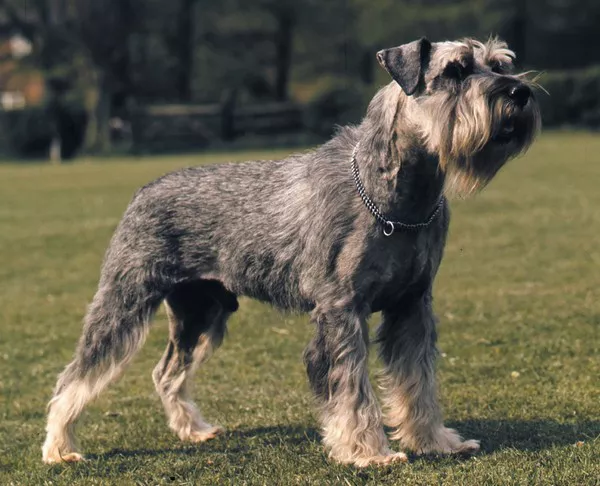Selecting the appropriate dog crate size for your Miniature Schnauzer is essential to ensure their comfort and safety. In this article, we’ll provide you with a practical guide to help you determine the ideal crate size for your beloved furry friend.
1. Measure Your Miniature Schnauzer:
Before choosing a crate, measure your Miniature Schnauzer from the tip of their nose to the base of their tail, and from the top of their head to the ground. Add a few inches to each measurement to determine the minimum dimensions your dog’s crate should have.
2. Consider Their Adult Size:
Miniature Schnauzers typically reach their full adult size by around 12 to 14 months. To avoid purchasing multiple crates as they grow, opt for a crate that accommodates their adult size.
3. Crate Length:
For a Miniature Schnauzer, a crate length of approximately 24 to 30 inches (61 to 76 cm) should suffice. This will provide enough room for them to stand, turn around, and lie down comfortably.
4. Crate Height:
Choose a crate with a height of around 20 to 24 inches (51 to 61 cm). This height allows your Miniature Schnauzer to sit up without their head touching the top of the crate.
5. Crate Width:
The width of the crate should be based on your dog’s body size, allowing them to stretch out comfortably. A crate width of 18 to 24 inches (46 to 61 cm) is generally suitable for a Miniature Schnauzer.
6. Crate Features:
Look for crates with a divider panel. This feature is particularly helpful when crate training a puppy. You can adjust the space as your Miniature Schnauzer grows.
7. Consider Your Dog’s Preferences:
Observe your Miniature Schnauzer’s behavior and preferences. Some dogs may prefer a cozier crate, while others might appreciate a bit more space.
8. Ventilation and Visibility:
Choose a crate with good ventilation and visibility. Your Miniature Schnauzer should feel comfortable and have an unobstructed view of their surroundings.
9. Easy Access:
Ensure that the crate has a secure door latch and easy access for cleaning and placing bedding.
10. Gradual Crate Training:
When introducing the crate, do so gradually. Make it a positive experience by associating it with treats, toys, and a comfortable blanket.
11. Comfort and Safety:
Line the crate with a comfortable dog bed or blanket to make it a cozy space for your Miniature Schnauzer. Avoid using bedding that can be easily chewed or ingested.
12. Adult Miniature Schnauzer Crate Example:
For an adult Miniature Schnauzer, a crate measuring 30 inches in length, 24 inches in height, and 20 inches in width could be an appropriate choice.
13. Do Schnauzers like crates?
Yes, many Schnauzers, including Miniature Schnauzers, can develop a positive association with crates when introduced and used correctly. However, individual preferences can vary among dogs. Here are a few points to consider:
- Crate Training:
Proper crate training is key to helping your Schnauzer develop a positive attitude towards crates. Gradual and positive exposure to the crate from a young age can make them more comfortable with the space.
- Den-Like Environment:
Dogs, including Schnauzers, have an instinctual desire for a cozy, den-like space. A crate can provide them with a sense of security and a designated area to call their own.
- Comfort and Familiarity:
Schnauzers are intelligent dogs that appreciate routine and familiarity. By creating a comfortable and familiar space within the crate, you can help them feel at ease.
- Crate as a Safe Haven:
When introduced properly, a crate can become a safe haven for your Schnauzer, especially during times of stress or when they need a quiet place to rest.
- Avoid Negative Associations:
Avoid using the crate as a form of punishment. This can create negative associations and make your Schnauzer reluctant to enter the crate.
- Gradual Introduction:
Introduce the crate gradually and associate it with positive experiences, such as treats, toys, and praise. Start with short periods of time and gradually increase the duration.
- Age and Individuality:
Schnauzer puppies tend to adapt more easily to crate training, while older dogs may take more time to adjust. Keep in mind that every dog is unique, and their comfort with a crate can vary.
- Monitoring Body Language:
Observe your Schnauzer’s body language when in or around the crate. If they seem stressed, anxious, or uncomfortable, it’s important to address their concerns and adjust the training process accordingly.
Conclusion
In conclusion, selecting the right crate size for your Miniature Schnauzer involves measuring their size, considering their adult size, and ensuring they have enough room to move comfortably. By providing a crate that suits their needs, you create a safe and cozy space for your beloved Miniature Schnauzer to rest and relax.


